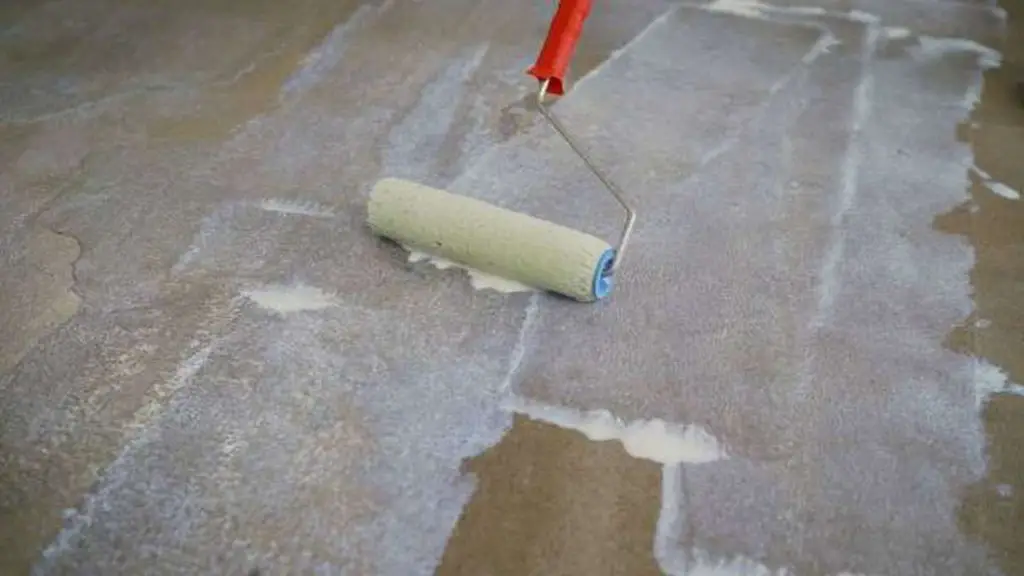Installing tile over an outdoor concrete surface can provide a beautiful and durable finished look. However, there are some important considerations when tiling over concrete outdoors, especially related to waterproofing. In this article, we’ll look at whether you need to waterproof outdoor concrete before tiling, the best practices for doing so, and the consequences of skipping this important step.
Page Contents
Should You Waterproof Outdoor Concrete Before Tiling?
In most cases, the answer is yes – you should waterproof outdoor concrete before installing tile. Waterproofing creates a protective barrier between the concrete and tile that prevents moisture from seeping through and causing damage. Here are some of the main reasons waterproofing is recommended:
- Prevents moisture damage – Outdoor concrete is exposed to rain, sprinklers, dampness and other wet conditions. Without waterproofing, moisture can soak into the concrete and get under the tile, leading to loosening, cracking and lifting.
- Protects against freeze-thaw damage – In colder climates, water in concrete can freeze and expand, causing the concrete to deteriorate over time. Waterproofing blocks moisture and helps prevent freeze-thaw damage.
- Provides a stable surface – Waterproofing creates a smooth, consistent layer over the concrete that allows the tile to adhere properly. Bare concrete may have an uneven surface that can lead to cracked or loose tiles down the road.
- Extends the life of the tile – By preventing moisture issues, a waterproofed concrete slab will provide a stable, long-lasting foundation for outdoor tile. This prevents repairs and tile replacement.
Waterproofing is especially important for concrete that is outdoors and exposed to the elements year-round. The rigors of seasonal weather changes, from rain and snow to summer sun, make waterproofing critical for success.
What Kind of Concrete Waterproofing Should Be Used?
There are several effective options when it comes to waterproofing outdoor concrete for tile installation, including:
- Liquid membrane waterproofers – These products are painted or rolled on as a thick liquid. They cure to form a seamless rubberized membrane over the concrete that blocks moisture. Popular brands include RedGard, Laticrete Hydro Ban and Mapei Mapelastic.
- Cementitious waterproofing compounds – Applied as a slurry coat, these combine concrete and polymers to create a waterproof barrier that still allows vapor transmission. ARDEX 8+9 is a common cementitious waterproofer.
- Sheet membranes – Flexible sheet products like Chloraloy or Elastoseal can be cut and embedded into liquid mortar over the slab. The sheets are overlapped like shingles to create a waterproof barrier.
- Pre-pan waterproof shower systems – Complete patented systems like Schluter Shower System integrate layered waterproof pan liners with drains and curb assemblies.
When selecting a concrete waterproofing method, consider factors like cost, ease of application, adhesion with tile products, and manufacturer warranties that reflect real-world conditions.
What’s the Best Process for Waterproofing Concrete and Tiling?
Here is an overview of the key steps involved in properly waterproofing and tiling outdoor concrete:
- Clean the concrete – Remove any dirt, oils, paint or existing coatings so the waterproofing adheres well.
- Repair cracks and defects – Use concrete caulk or hydraulic cement to patch any cracks, spalls or imperfections.
- Apply waterproofing – Roll on, spread or embed the selected waterproofing per manufacturer instructions.
- Allow curing time – Follow recommended cure times before tiling so waterproofing reaches full strength.
- Prepare for mortar – Use a concrete primer before installing a mortar bed if required.
- Install tile with thinset – Mix a polymer-modified thinset designed for exterior use and install tile.
- Grout tile joints – Use an outdoor-rated grout once tiles are set. Epoxy grout is a good choice.
- Apply sealant – Seal all expansion joints and corners with exterior-grade silicone for added moisture protection.
It’s also important to maintain a slope on outdoor concrete prior to waterproofing so water drains effectively and doesn’t pool on the surface. Careful prep work and monitoring moisture during the curing stages will help ensure a successful outcome.
What Happens if You Don’t Waterproof Outdoor Concrete Before Tiling?
Skipping proper waterproofing on outdoor concrete tile installations can lead to some costly problems down the road, including:
- Loose, cracked or lifting tiles – Without a protective barrier, moisture underneath can cause tiles to deteriorate or break their bond with the thinset.
- Efflorescence – This white, chalky substance that appears on the surface is caused by moisture reacting with minerals in the concrete and grout.
- Mold or mildew growth – Wet conditions allow mold spores to take root and create black or green growth on the tile and grout lines.
- Compromised freeze-thaw resistance – Water absorbed into the concrete can expand when frozen, accelerating wear and deterioration.
- Bubbled or stained waterproofing – Attempting to waterproof over a non-waterproofed substrate later causes issues with adhesion.
In addition to creating cosmetic and performance problems, lack of waterproofing can cause safety hazards for anyone walking on the tile if it becomes loose or uneven. Doing the job right from the start avoids headaches and costs down the road.
Conclusion
Waterproofing outdoor concrete before installing tile is a critical step that should not be skipped. The right waterproofing creates a moisture barrier that prevents absorption into the slab and penetration under the tiles. This provides long-lasting protection against cracking, lifting, and freeze-thaw damage in exterior conditions. A variety of effective waterproofing options are available. With proper surface prep, application of the waterproofing, and adhesion with quality tile and grout products, you can achieve a beautiful and durable outdoor tile installation.
